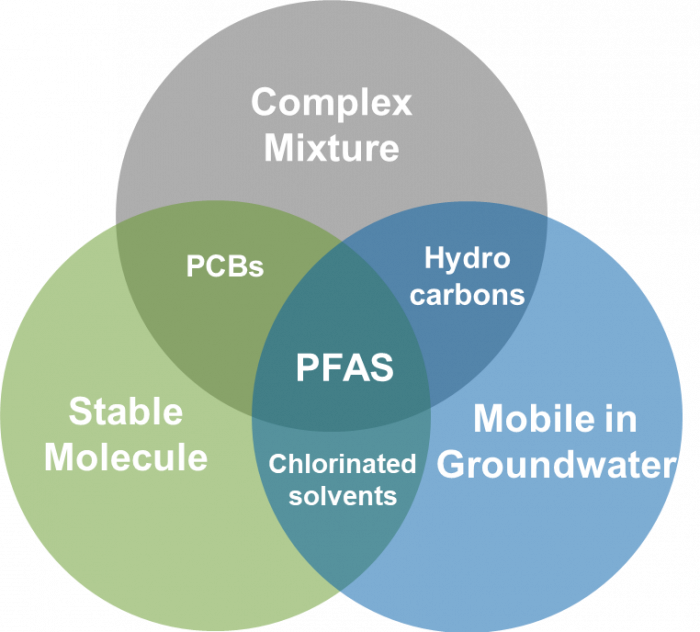Biosolids Containing PFAS, Client Advisory

Overview
Before discussing the issue of PFAS contamination in biosolids, let’s review the basics of PFAS and their challenges. PFAS (poly- and perfluoroalkyl substances) are a group of chemicals known for their unique properties. They impart oil and water repellency, temperature resistance, and friction reduction to materials. These compounds have been used for decades in consumer products such as stain- and water-repellent fabrics, nonstick cooking products, cleaning products, and fire-fighting foams. While these properties are beneficial in many applications, the environmental impacts of this class of compounds have been a source of growing concern in the last 10-20 years. Research has shown that these compounds are persistent, bioaccumulative, and toxic to humans and other species at very low concentrations. Research has linked some PFAS to a range of adverse health effects. These include reproductive, developmental, and immune system toxicity as well as impacts on the liver. Due to their complexity, mobility, and stability, these compounds pose significant environmental challenges to environmental managers worldwide
Concerns of PFAS in Biosolids
Due to the concerns about human health impacts, in 2016, the U.S. Environmental Protection Agency (USEPA) issued a drinking water lifetime health advisory under the Safe Drinking Water Act (SDWA) of 70 parts per trillion for two specific PFAS compounds, perfluorooctanoic acid (PFOA) and perfluorooctanoic sulfate (PFOS). Because this limit is a health advisory, it is not enforceable by USEPA. However, federal legislation is in progress that will require USEPA to establish enforceable drinking water limits for PFOA and PFOS under the SDWA, although many states are already acting.

Photo Source: Eurofins TestAmerica
Because of their chemical nature, PFAS will collect and concentrate in biosolids and have, in fact, been widely detected in municipal biosolids, likely as a result of their use in consumer products. Because 50% of biosolids produced in the U.S. are applied to agricultural land as fertilizer, this presents another exposure source of PFAS when crops and animals raised on these lands uptake and concentrate the PFAS. In Maine, a dairy farmer was forced to shut down after sludge that spread over his land was linked to high levels of PFAS in the milk his cows produced. Although USEPA has not limited PFAS in fertilizer or developed a standard for PFAS for this type of application, many states are examining the issue. Based on sludge tests at 41 wastewater treatment plants, Michigan ordered several farmers to stop distributing their biosolids to crops.
Maine enacted a moratorium on land application of biosolids in March 2019. However, in April, the state permitted the continued distribution of biosolids in compost products. Massachusetts is requiring testing of biosolids for PFAS as part of their normal land application permit renewal process. New Hampshire is working with the U.S. Geological Survey on a soil study, from which the results will help them set a standard.
Need Assistance?
The growing concern over PFAS contamination and distribution means that more and more states will require sampling of biosolids. For help with sampling or determining your state’s recommendations or to discuss emerging information, please contact us at info@EnviroScienceInc.com or call our toll-free number at 800-940-4025.
For more information on PFAS, visit: https://www.enviroscienceinc.com/services/laboratory-analysis/pfas-services/